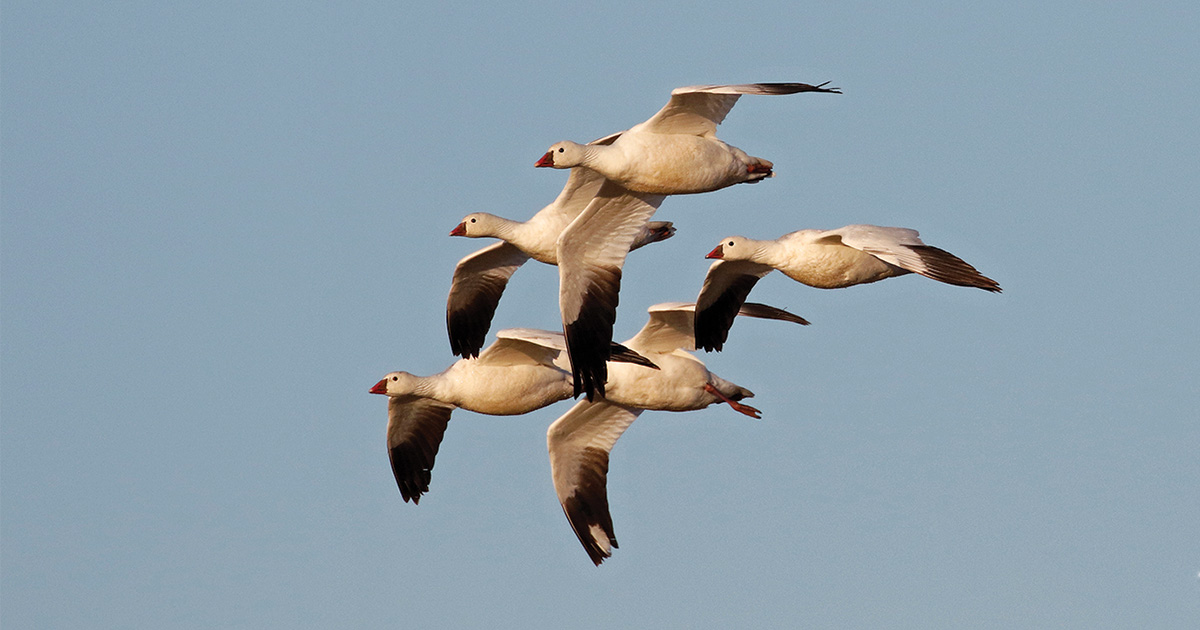Migration Alert: Snowstorm Forces About-Face for Migrating Light Geese
March 26, 2024 – Central Flyway
March 26, 2024 – Central Flyway

The significant spring snowstorm currently impacting northern portions of the Central Flyway has light geese on the move in key migration corridors. Here’s a look at how the return of winter weather is impacting hunter opportunities in the region.
During a typical spring, hunters are pretty safe to circle the third week of March as “go-time” for the migration of light geese through traditional migration corridors in South Dakota, including the region between Highway 81 and the James River in the eastern half of the state, where I found myself over the weekend. The winter and spring of 2023–2024 have been anything but “typical” however, and in the absence of ice, snow, and cold temperatures, a majority of snows, blues, and Ross’s geese have already pushed north through much of South Dakota.
A severe winter storm which dropped several inches of heavy snow across South Dakota is driving many geese back south, however. With the forecast calling for strong north winds and cold temperatures through the coming week, there are reasons to be optimistic about hunting opportunities in the state as the Light Goose Conservation Order marches along toward April.
“Last week, ninety percent of the geese were probably north of us, and after this storm, 90 percent of the geese might be back south of us again. It’s just crazy,” says South Dakota guide Ben Fujan.
I joined Fujan for a couple of days of hunting over the weekend, and his phone was lighting up with text messages from contacts to our north, including one of his crew at a decoy spread west of Watertown, all with updates of geese rolling south ahead of the storm.
The large flocks of geese did not make it as far as the skies above our decoy spread near Mitchell, but we caught enough groups on the move to put a sizable dent in the number of shotshells in my possession. The majority of the birds harvested were adults.
With reports of pockets of geese yet to migrate into South Dakota, and the expectation that many of the geese that have been up along the North Dakota border moving back into central South Dakota, Fujan believes that there should be good opportunities for hunters in the days ahead.
“All in all, I think we should be able to make it into early April, which is something I wasn’t sure would happen a couple of weeks ago,” Fujan says.
Stay up to date with the latest migration information.